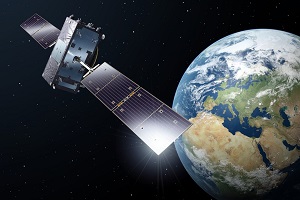As Bluetooth is becoming more and more ubiquitous in smart homes, buildings, and factories, there are many myths about what the wireless technology can and cannot do. In fact, its capabilities go far beyond its use in consumer electronics and enables a wide range of professional solutions in commercial and industrial environments. Here are some of the common myths around Bluetooth – and the lesser-known facts you might not know!
Myth: Bluetooth is a short-range technology
One of the most widespread misconceptions is that Bluetooth is only suitable for short-range applications. It is largely based on the origins of the technology: shorter ranges are sufficient for well-known use cases, such as audio streaming and wearables. As a result, many developers have decided to implement their Bluetooth enabled products to achieve a maximum range of 10 to 30 meters. This also optimises energy consumption for often small batteries in those smart devices.
Fact: Bluetooth signals can extend to more than one kilometer
The effective, reliable range between Bluetooth devices can exceed one kilometer, depending on they are implemented, and can even support remote control of beyond visual range (BVR) drones. This wide range of reliably achievable distances for data transmission offers enormous flexibility for the development and implementation of Bluetooth applications in commercial and industrial environments.

Myth: Interference makes Bluetooth connections unreliable
Interference is one of the biggest challenges for any wireless technology when it comes to reliable data communication. Interference occurs when multiple devices simultaneously attempt to transmit data packets over the same frequency spectrum, in the same general area, and at the exact same time. When this happens, collisions can occur, potentially causing packets to be corrupted or lost.
Fact: Bluetooth technology overcomes potential interference by design
Bluetooth technology combines different methods to reduce the probability of collisions and to compensate for packet loss, including the use of small, fast data packets and adaptive frequency hopping.
Having short packets that travel fast through the air means they are less likely to collide with packets being sent by other nearby devices. An example from the field of mesh networking: compared to other low-power wireless network technologies, Bluetooth mesh packets are typically half the size and four times faster.
When transmitting data, Bluetooth uses a technique called frequency hopping spread spectrum (FHSS) to increase resilience in busy wireless environments. FHSS divides the spectrum into many separate channels (40 in the case of Bluetooth Low Energy) and then hops between those channels when transmitting packets. In addition, Bluetooth uses a special form of FHSS called adaptive frequency hopping (AFH), which enables devices to dynamically identify channels that are prone to interference and no longer use those channels.

Myth: Bluetooth technology is only for consumer applications
As several billion Bluetooth-enabled headsets, speakers, sports and fitness devices, and all manner of consumer electronics products ship each year, it’s understandable that many people believe Bluetooth is only suitable for consumer applications. However, nothing can be farther from the true, as Bluetooth is now the leading wireless technology in all manner of commercial and industrial applications.
Fact: Bluetooth technology supports commercial and industrial sectors
Developers worldwide rely on Bluetooth technology for their wireless device communications and positioning needs in the most challenging environments. From networked lighting control systems in commercial office buildings, to high accuracy asset tracking systems in warehouses, to condition monitoring systems on the factory floor, Bluetooth technology meets the strict scalability, reliability, and security requirements of commercial and industrial applications.
The Energy Management Collaborative (EMC) in collaboration with Silvair and McWong International implemented the world’s largest Bluetooth mesh installation for networked lighting control in the US Here, close to 4,000 Bluetooth mesh enabled lighting products were installed on 17 floors of a 470,000-square-foot office building!

Digital Catapult in collaboration with Quuppa and ThinkIN implemented a Bluetooth real-time locating system for Dyer Engineering in the UK that enables high-accuracy tracking of over 1,000 factory floor assets, dramatically increasing manufacturing productivity.
BB implemented a Bluetooth condition monitoring system in an Absolut production facility in Sweden, giving the ability to predict equipment maintenance needs and align them with planned production stops.
Myth… Busted.
The author is By Ken Kolderup, Chief Marketing Officer at Bluetooth SIG











